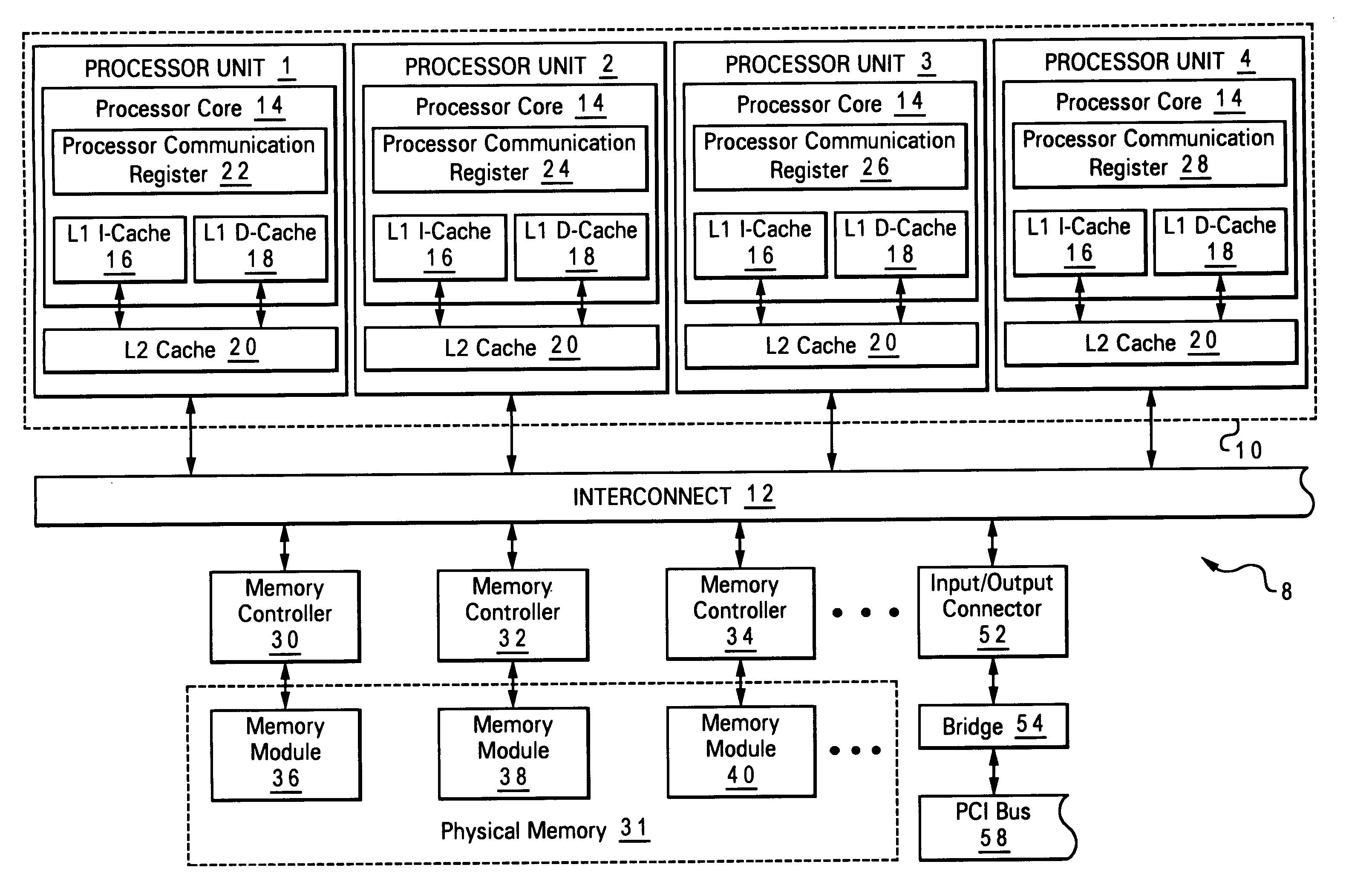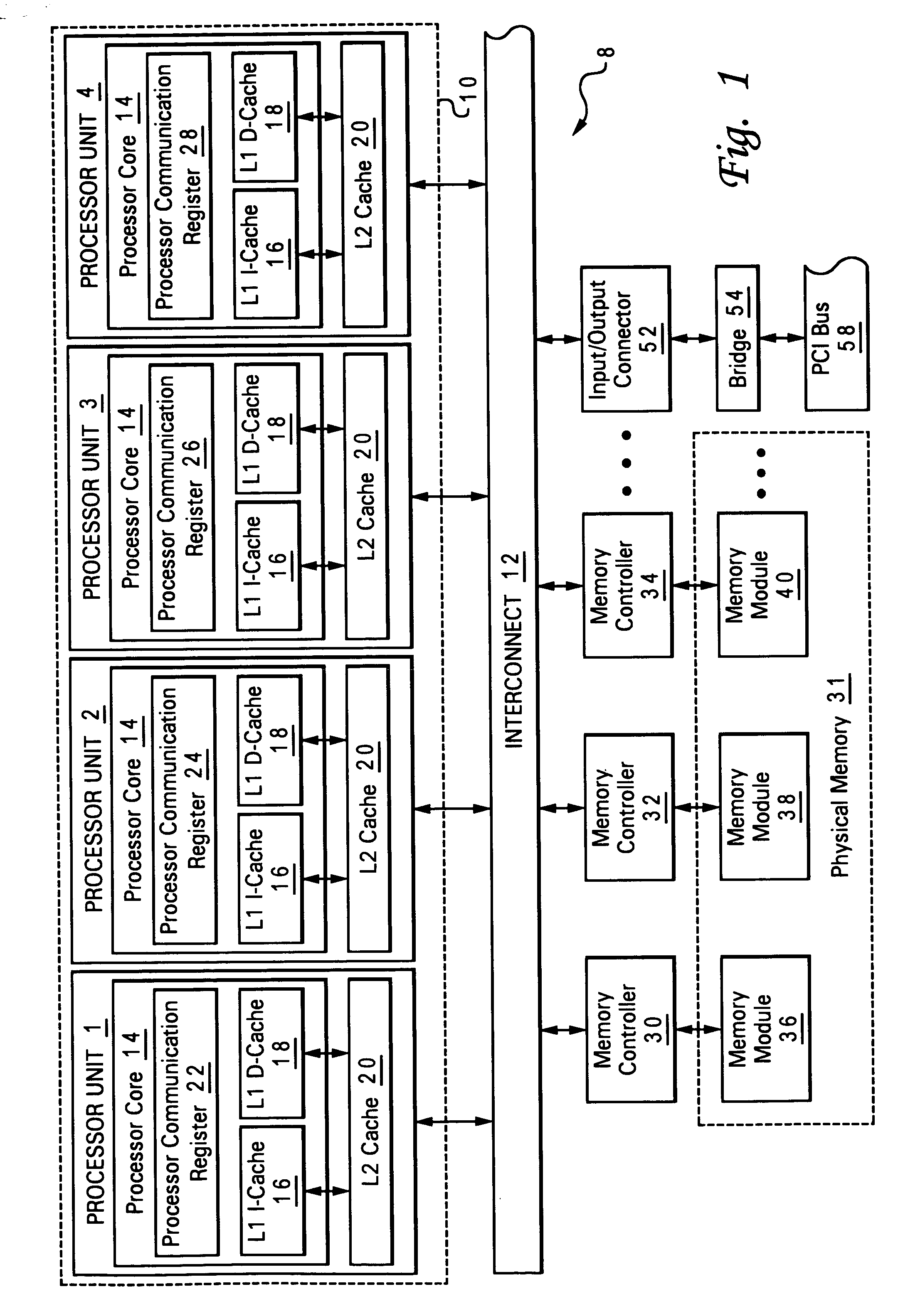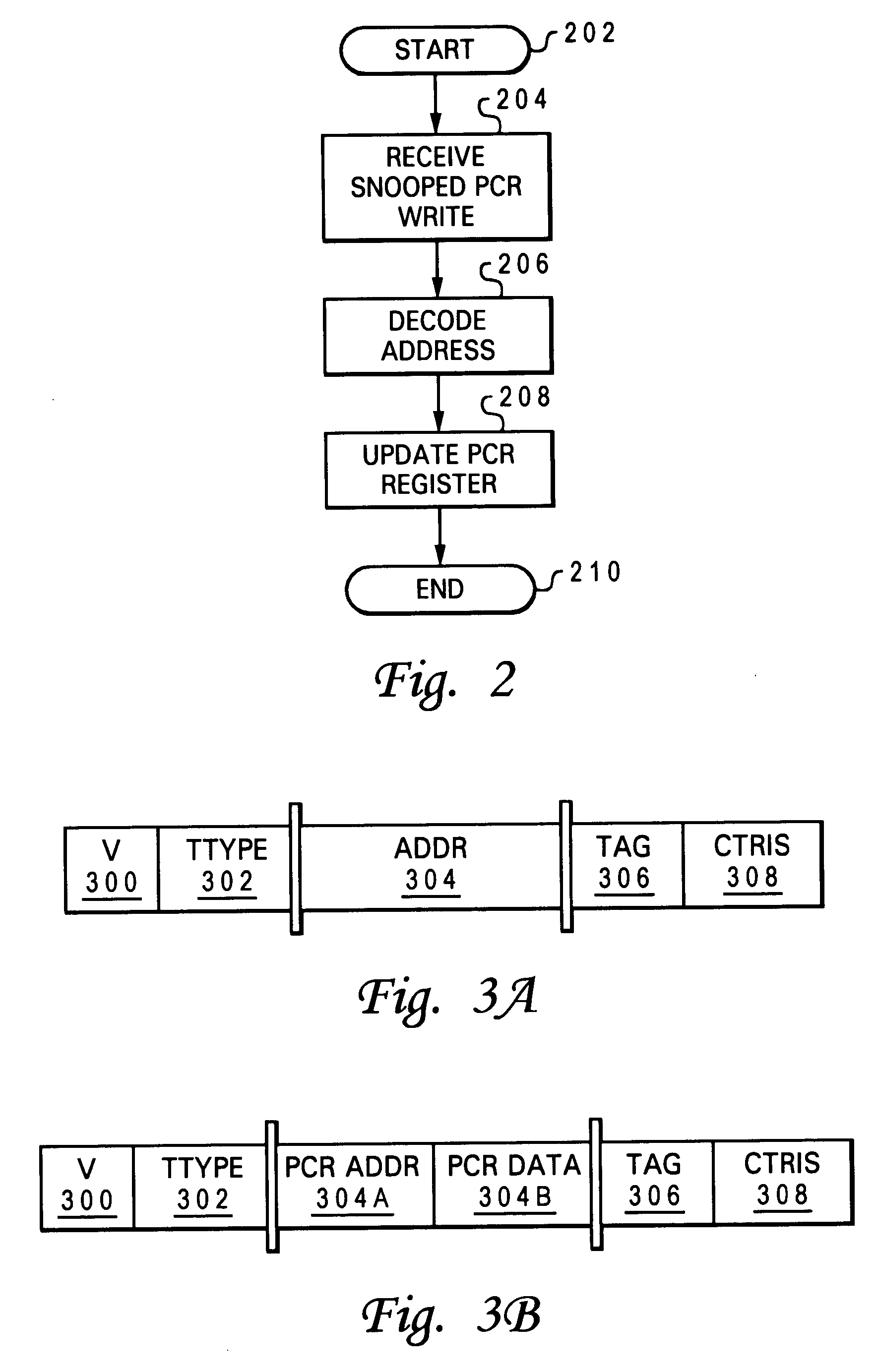Method and data processing system for microprocessor communication in a cluster-based multi-processor network
a multi-processor network and microprocessor technology, applied in the field of data processing, can solve the problems of large interconnect bandwidth consumption, high communication latency, and large coherency
- Summary
- Abstract
- Description
- Claims
- Application Information
AI Technical Summary
Benefits of technology
Problems solved by technology
Method used
Image
Examples
Embodiment Construction
)
[0033] The present invention is implemented, among other places, within the multi-processor (MP) configuration described in the related applications in which each processor in the MP is designed with a processor communication register (PCR). The relevant content of the related applications are incorporated herein by reference. As noted within these related applications, it is often the case where there are a small number of critical synchronization variables that are shared by a large number of the processors (for example, for a hypervisor). For these cases, special registers that are duplicated within every chip are provided and referred to as PCRs. With these PCRs, each chip accomplishes read operations to it's own local copy of the register and a processor which writes to the register updates all the copies of the registers within all processor chips.
[0034] To efficiently support these duplicated registers, a means needs to be provided to allow for the registers to be efficientl...
PUM
 Login to View More
Login to View More Abstract
Description
Claims
Application Information
 Login to View More
Login to View More - R&D
- Intellectual Property
- Life Sciences
- Materials
- Tech Scout
- Unparalleled Data Quality
- Higher Quality Content
- 60% Fewer Hallucinations
Browse by: Latest US Patents, China's latest patents, Technical Efficacy Thesaurus, Application Domain, Technology Topic, Popular Technical Reports.
© 2025 PatSnap. All rights reserved.Legal|Privacy policy|Modern Slavery Act Transparency Statement|Sitemap|About US| Contact US: help@patsnap.com



